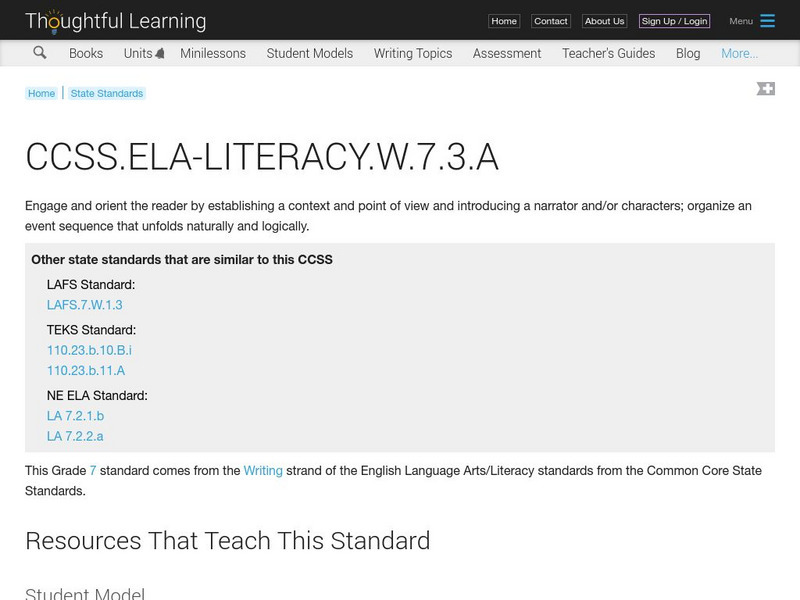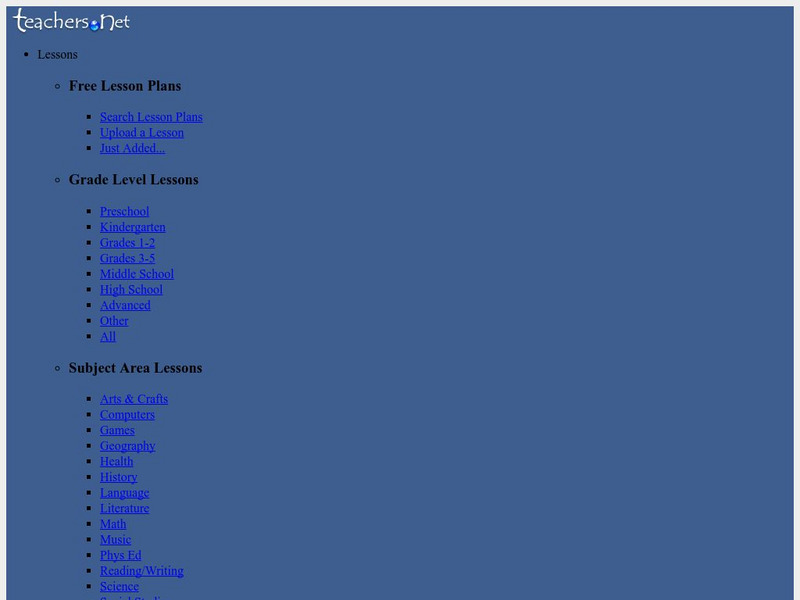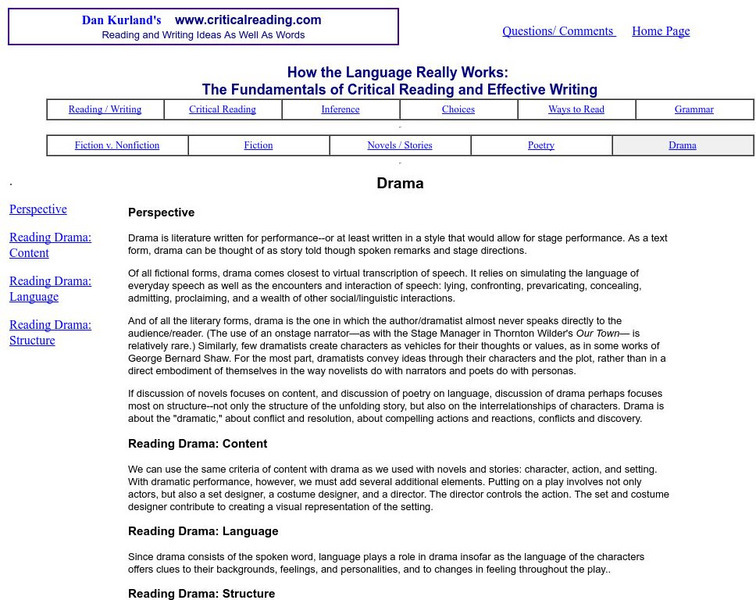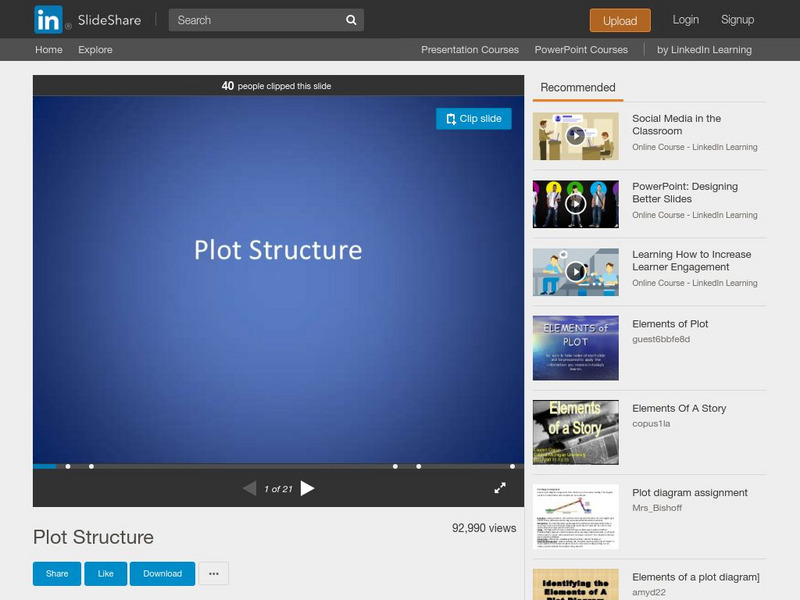Other
****Story Mapping Strategy
This accessible explanation features a worksheet to help teach students to use story mapping to identify elements of a narrative.
Quizlet
Quizlet: R.3 Analyze How and Why Individuals, Events, or Ideas, Develop/interact
Please align to CCSS.ELA-Literacy.CCRA.R.3 Analyze how and why individuals, events, and ideas develop and interact over the course of a text.
Other
Thoughtful Learning: ccss.ela literacy.w.7.3.a
Pick and choose from these lessons and units that focus on narrative writing. Specifically, how to establish a context and point of view, introduce characters, and organize an event sequence.
Texas Education Agency
Texas Gateway: Analyze Linear Plot Developments in Literary Texts/fiction
[Accessible by TX Educators. Free Registration/Login Required] In this lesson, you will learn how to recognize conflict, analyze linear plot, and determine how the conflict is resolved.
Texas Education Agency
Texas Gateway: Characters and Staging in Drama
[Accessible by TX Educators. Free Registration/Login Required] In this lesson, you will analyze how different playwrights characterize, or develop, their protagonists and antagonists through the dialogue and staging of their plays.
Texas Education Agency
Texas Gateway: Analyze the Central Characters in Literary Text/fiction
In this lesson, you will discover some ways that writers reveal the complexity of their characters. By closely analyzing one author's characters, you'll come to see how their words, actions, and interactions with one another can shape a...
HotChalk
Hot Chalk: Lesson Plans Page: The Nature of the Antagonist
This lesson plan teaches students to understand the differences between protagonists and antagonists, to recognize a "villain" in storytelling, and to understand conflict as used in literature.
Teachers.net
Teachers.net: Flip Books and Story Boards
While this lesson is designed to aid in communications technology, the concept and procedure of the lesson can be readily used in any class. The main concept taught is organization and developing chronological order.
Alabama Learning Exchange
Alex: Using Fairy Tales to Teach the Short Stories
Familiar fairy tales are used as guides to help students analyze the elements of the short story: plot, theme, setting, point of view, and character.
Alabama Learning Exchange
Alex: How Silk Is Made
This lesson focuses on sequencing using a narrative passage and Makes Sense Guided Reading Strategies.
PBS
Pbs Learning Media: Interpreting Characters, Setting, Plot, & Theme: Triangle...
Middle schoolers will view video documenting the real-life story of the Triangle Shirtwaist Factory fire in 1911. Students will complete a story elements graphic organizer. This organizer will help them distinguish various story elements...
Louisiana Department of Education
Louisiana Doe: Louisiana Believes: Guide for Determining Text Complexity
An educator's guide to help determine the level of text complexity.
AdLit
Ad lit.org: Classroom Strategies: Story Maps
Story Maps are used for teaching students to work with story structure for better comprehension. This technique uses visual representations to help students organize important elements of a story. Students learn to summarize the main...
Quia
Quia: Rags to Riches: Literary Elements: Setting, Plot, and Characters
In this game, students answer questions about the story elements of setting, plot, and characters
Other
Critical reading.com: Drama
Discusses what the literary form of drama consists of in relation to its content, language, and structure.
Other
Basic Literary Terms: The Novel and Short Story
This site has definitions of many parts of short stores including crisis, novel, short story, plot, exposition, theme, etc.
Tom Richey
Slide Share: Elements of Plot
A slide show with ten slides about the parts of a plot development: exposition, conflict, rising action, climax, falling action, and resolution.
Tom Richey
Slide Share: Plot Structure
A slide show with twenty-one slides explaining elements of plot including: characters, setting, exposition, conflict, rising action, climax, falling action and resolution.
Quia
Quia: Narrative Structure Elements
This reading resource provides vocabulary words with definitions. All words are related to the elements of narratives. A link to associated review activities is included.
Quia
Quia: Compare/contrast Character, Plot, and Setting Test
This interactive activity assesses students' understanding of the story elements. Students will read passages that include a short story and a brief drama; then students will answer assorted questions associated to each piece.
Quia
Quia: Story Elements
This interactive game of "Rags to Riches" assesses students' knowledge of story elements. Students will identify the definitions of the story elements and the applications of story elements in stories.
Quia
Quia: There's More to Character Than Meets the Eye
Twenty flashcards with character vocabulary words and their definitions.
Quia
Quia: Character Terms
Complete each sentence by typing the correct character word into each box in this ten-question quiz.
Quia
Quia: Rags to Riches Author's Tone and Point of View
Answer questions about author's purpose, tone, and point of view in this Rags to Riches style game.




















